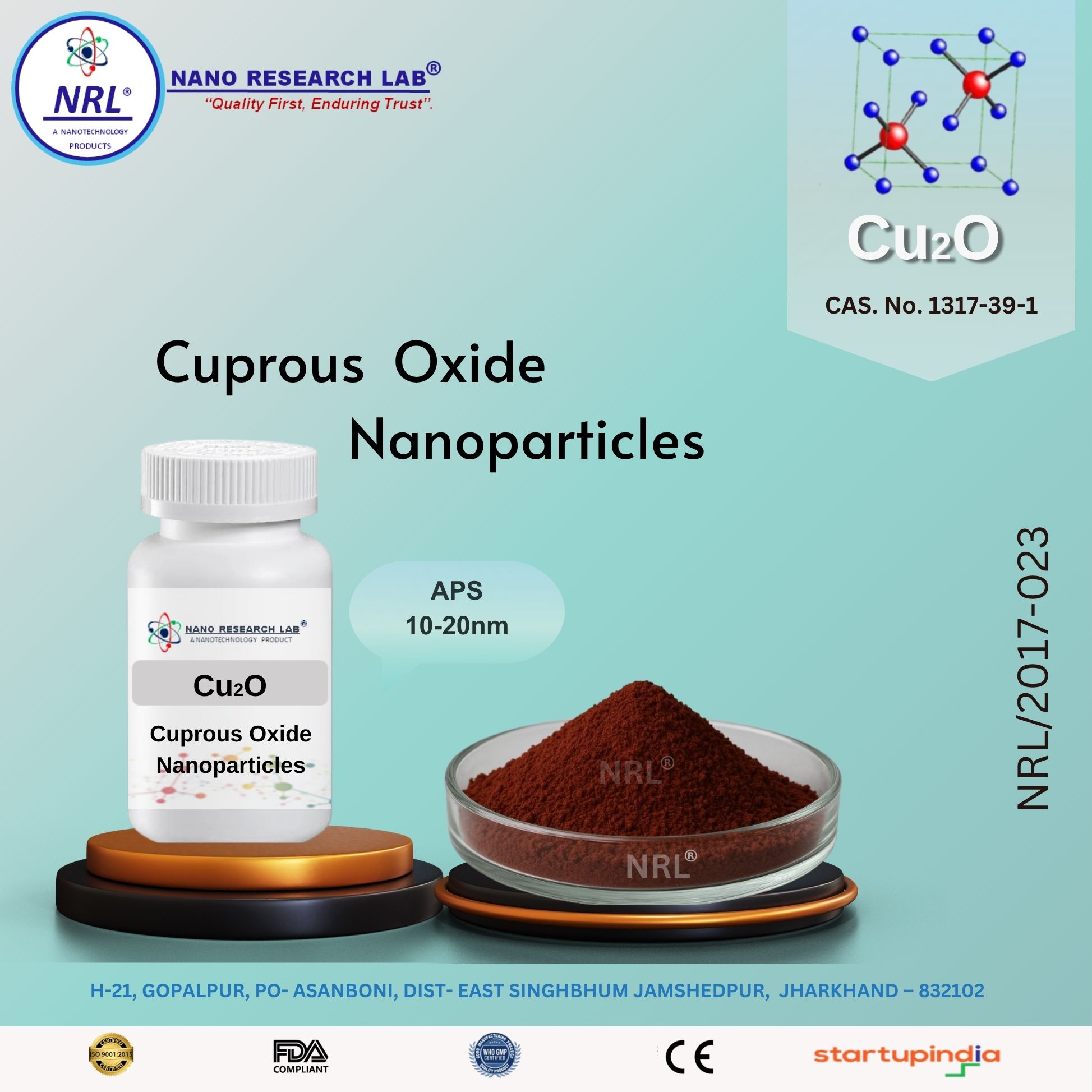
Cuprous Oxide Nanopowder/Nanoparticles (Cu2O, 10-20nm, Purity 99.5%)
₹1475.00
Cuprous Oxide Nanopowder/Nanoparticles (Cu₂O, 10–20 nm, Purity: 99.5%)
Technical Specifications
Property | Specification |
|---|---|
Chemical Name | Cuprous Oxide (Cu₂O) |
CAS Number | 1317-39-1 |
Molecular Weight | 143.09 g/mol |
Purity | ≥ 99.5% |
Appearance / Color | Reddish Brown Fine Powder |
Particle Size (Average) | 10–20 nm |
Morphology | Nearly Spherical / Irregular |
Crystal Structure | Cubic |
Density | ~6.0 g/cm³ |
Specific Surface Area (BET) | 40–70 m²/g |
Melting Point | 1235 °C |
Boiling Point | Decomposes before boiling |
Band Gap Energy | ~2.0–2.2 eV (semiconducting) |
Solubility | Insoluble in water; soluble in acids and ammonia |
pH (in aqueous dispersion) | ~7.0 |
Stability | Sensitive to oxidation; converts to CuO in air or moisture over time |
Storage | Store in inert, dry atmosphere away from air and light |
Key Features
High Purity (≥ 99.5%) ensuring minimal impurities for precision applications.
Ultra-fine Nanoparticles (10–20 nm): Provide large reactive surface area.
Cubic Crystal Structure: Ensures consistent optical and electronic behavior.
Semiconducting (p-type): Ideal for solar, sensor, and catalytic uses.
Distinctive Reddish Color: Indicates pure Cu(I) oxide phase.
High Reactivity: Useful for redox and photocatalytic reactions.
Eco-friendly Composition: Less toxic compared to other copper compounds.
Applications
1. Photocatalysis & Environmental Applications:
Degradation of dyes and organic pollutants under visible light.
Used in water purification and photocatalytic reduction processes.
2. Solar Cells & Optoelectronics:
Acts as a low-cost p-type semiconductor in solar cell fabrication.
Employed in photoelectrochemical and thin-film devices.
3. Sensors:
Used in gas, humidity, and glucose sensors due to high sensitivity and conductivity.
4. Catalysis:
Functions as a catalyst and co-catalyst in organic reactions and oxidation processes.
5. Antimicrobial & Coating Applications:
Exhibits strong antibacterial activity; used in antimicrobial coatings and textiles.
6. Batteries & Energy Devices:
Incorporated in lithium-ion and solid-state battery research for electrode materials.
7. Research & Nanotechnology:
Suitable for nanocomposite synthesis, conductive inks, and materials science studies.
